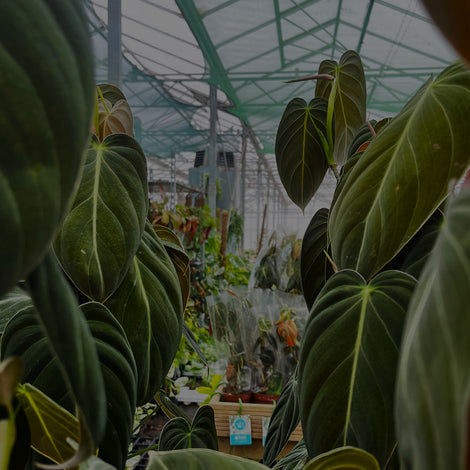Beginner's guide to Ornamental trees
Ornamental trees are a captivating addition to any garden, offering not only striking focal points but also year-round interest through their diverse forms, colors, and textures. These enchanting trees can flourish in various garden settings, from compact urban courtyards to extensive rural landscapes. In this comprehensive guide, we will explore the captivating world of ornamental trees, discussing the many types available, how to choose the best ones for your garden, planting techniques, and essential care tips to ensure a thriving and visually stunning arboreal display for years to come.
- A Palette of Nature's Finest: Types and Varieties of Ornamental Trees
Ornamental trees can be grouped into several categories based on their growth habit, foliage type, and distinctive features. Some popular categories and examples include:
a. Flowering Trees: These trees produce an abundance of showy blooms, adding color and fragrance to your garden. Examples include dogwood (Cornus spp.), cherry (Prunus spp.), and magnolia (Magnolia spp.).
b. Foliage Trees: These trees boast impressive foliage, often with unique colors, shapes, or textures. Examples include Japanese maple (Acer palmatum), smoke tree (Cotinus coggygria), and ginkgo (Ginkgo biloba).
c. Weeping Trees: These trees exhibit a distinctive pendulous growth habit, creating an elegant and graceful appearance. Examples include weeping willow (Salix babylonica), weeping cherry (Prunus subhirtella 'Pendula'), and weeping mulberry (Morus alba 'Pendula').
d. Dwarf Trees: These trees are smaller in stature, making them ideal for gardens with limited space or for use as accent plants. Examples include dwarf crabapple (Malus spp.), dwarf conifers (various genera), and dwarf ornamental pear (Pyrus calleryana 'Capital').
- Selecting the Right Ornamental Trees for Your Garden
When choosing ornamental trees for your garden, consider the following factors:
a. Climate and Hardiness Zone: Select ornamental trees that are well-suited to your local climate and hardiness zone, ensuring they can withstand the typical temperature range in your region.
b. Size and Growth Habit: Consider the mature size and growth habit of each tree, choosing varieties that will fit comfortably within your available garden space and complement your existing landscape design.
c. Foliage and Flower Interest: Select ornamental trees with foliage, flowers, or other features that appeal to your aesthetic preferences and provide visual interest throughout the year.
d. Soil and Light Requirements: Choose trees that are compatible with your garden's soil type and light conditions, ensuring they receive the necessary nutrients and sunlight for optimal growth.
- Planting Techniques for Ornamental Tree Success
a. Site Selection: Choose a planting site with suitable soil and light conditions for your chosen ornamental tree. Ensure there is adequate space between trees and other garden features for air circulation and future growth.
b. Soil Preparation: Amend the planting area with organic matter, such as compost or well-rotted manure, to improve soil fertility and structure. Perform a soil test to determine nutrient levels and pH, adjusting as needed based on the specific requirements of your chosen ornamental tree.
c. Planting: Dig a hole twice as wide and just as deep as the root ball of your ornamental tree. Gently loosen the roots and place the tree in the hole, ensuring the root collar is level with the soil surface. Fill the hole with soil, firming it gently around the roots, and water thoroughly to settle the soil.
d. Mulching: Apply a layer of organic mulch, such as wood chips, straw, or pine needles, around the base of the ornamental tree, leaving a gap around the trunk to prevent rot. Mulching helps conserve moisture, suppress weeds, and regulate soil temperature.
- Essential Care Tips for Ornamental Trees
a. Watering: Ornamental trees require consistent moisture, especially during the establishment period. Water regularly, providing deep, infrequent soakings to encourage deep root growth. Adjust your watering schedule based on the specific needs of your chosen tree and local weather conditions.
b. Fertilizing: Apply a balanced, slow-release fertilizer in early spring, following package instructions for application rates and frequency. Avoid over-fertilizing, as excessive nutrients can lead to excessive foliage growth at the expense of overall plant health.
c. Pruning: Prune ornamental trees as needed to maintain their shape, promote healthy growth, and remove dead, diseased, or damaged branches. The ideal pruning time varies depending on the tree species; consult species-specific guidelines for the best timing and techniques.
d. Pest and Disease Management: Inspect your ornamental trees regularly for signs of pests or diseases, such as aphids, scale insects, or fungal infections. Address any issues promptly, using organic or chemical treatments as appropriate and following label instructions.
Ornamental trees offer a wealth of benefits, from creating eye-catching focal points to enhancing the overall aesthetic appeal of your garden. By selecting the right ornamental trees, planting them properly, and providing essential care, you can create a thriving and visually stunning arboreal display to enjoy for years to come. This detailed guide has provided you with the knowledge and tools needed to successfully incorporate ornamental trees into your garden, transforming your outdoor space into a magnificent work of living art.





















Leave a comment
Please note, comments need to be approved before they are published.